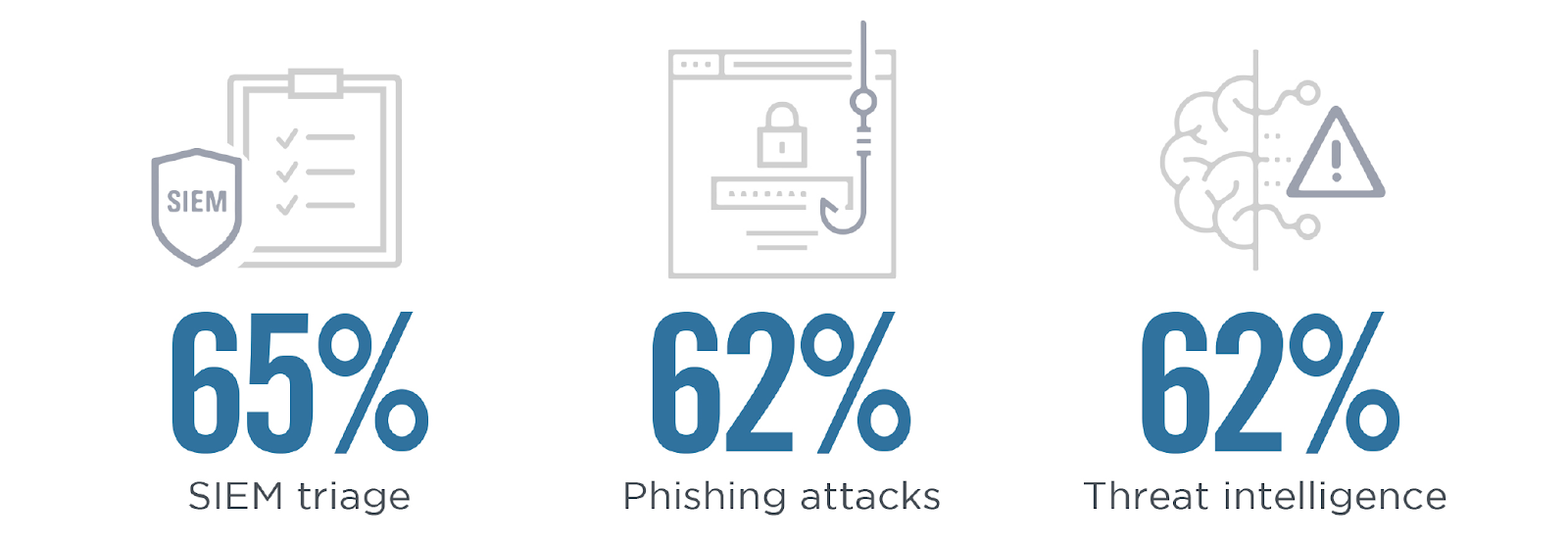SOAR: The Acknowledgement That All Of Your Cybersecurity Platforms Have Failed
The latest in an ever-increasing bag of supplemental platforms to address the shortcomings of legacy cyber threat platforms is SOAR (Security Orchestration Automation and Response).
Like its predecessors, SOAR is a cyber bandage designed to address the failed promises and functional inadequacies of legacy (SIEM, NTA and UBA) vendors with yet another layer of additive and arguably unnecessary technology.
It’s yet another “solution” to add to the heap.
In fact, in a recent survey conducted by Swimlane, cybersecurity professionals stated that the most popular use case for SOAR was as a tool to triage their already existing SIEM solution:
What are the key use cases your organization is utilizing SOAR for?

“SOAR is just another band-aid for the shortcomings of all of these other products,” says Mike Yelland, Senior Sales Engineer at MixMode.
Take, for example, the primary value prop for SOAR solutions as described by vendors and analysts alike: To improve, streamline, and enhance the interoperability between multiple, disparate security platforms.
The presumption then for the value of a SOAR platform is that the previously deployed cybersecurity platforms have failed to address the requirements they were intended to solve.
Worse, it presumes that the original goals of the deployment can only be addressed by adding additional supplemental technology and workflow integration to address the deployed product’s functional gaps.
The most concerning aspect of SOAR’s position in the market is that it requires customers to acknowledge that all the additive technology, associated budget, and operational resources invested to date have not fulfilled the promises they have been touted to deliver.

In our newest whitepaper, “SOAR: The Acknowledgement That All Of Your Cybersecurity Platforms Have Failed,” we refute the patchwork strategy of additive cybersecurity solutions and technology and explain why we believe SOAR is just an admission that all of your other cybersecurity platforms aren’t doing their job.
Ultimately, even teams that invest heavily in a variety of add-on solutions typically find that they remain vulnerable to internal, external, and zero-day threats. For teams stuck in this add-on solution cycle, providing adequate cybersecurity requires a whack-a-mole approach, where another issue pops up as soon as the company invests in a new solution.
Click here to download your copy of, “SOAR: The Acknowledgement That All Of Your Cybersecurity Platforms Have Failed.”
MixMode Articles You Might Like:
A Utility Company’s Barriers to Successful Network Oversight
Innovation During a Crisis: A story of PIE and Ice Cream
Our Top 2020 Cybersecurity Insights
Russian Hack of U.S. Federal Agencies Shine Spotlight on SIEM Failures in Cybersecurity
SOAR: The Acknowledgement that all of your cybersecurity platforms have failed

SOAR: The Acknowledgement that all of your cybersecurity platforms have failed
The cybersecurity marketplace has adapted and yet marginally evolved to meet the changing needs of security operation centers (SOCs) over the past few decades. It seems as though every week there’s a new solution introduced.
To stay ahead of the bad actors who have been evolving their techniques right alongside the market, companies find themselves making nearly continual technology and resource investments into security solutions and processes. For some teams, the result is a patchwork of incompatible, often redundant, tools.
But are these “additive solutions” truly helping? In this whitepaper we refute this strategy and explain why we believe SOAR is just an admission that all of your other cybersecurity platforms aren't doing their job.
Download the Whitepaper
Complete this form to download the Whitepaper
Ready to join the next wave of Cybersecurity?
Stop wasting time and money with outdated threat detection solutions, get a demo of MixMode today and learn how you can improve your security capabilities.


